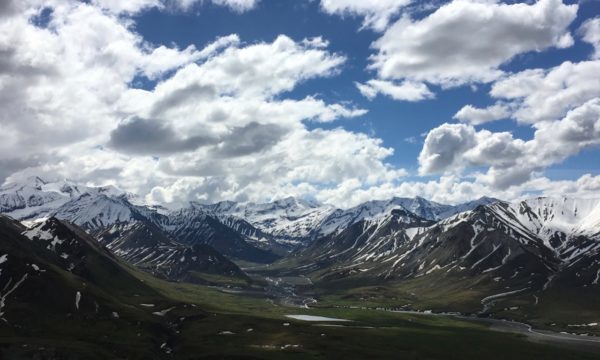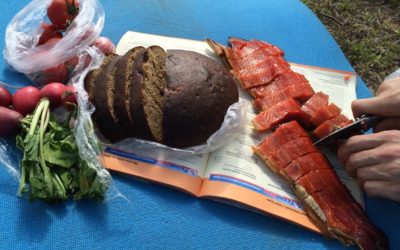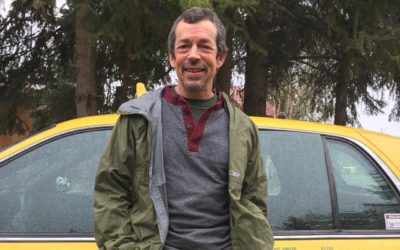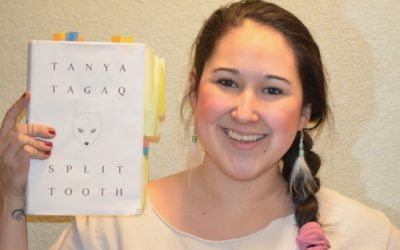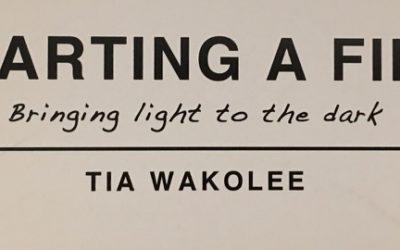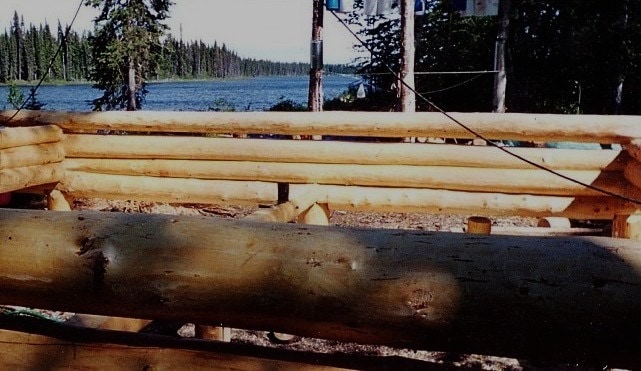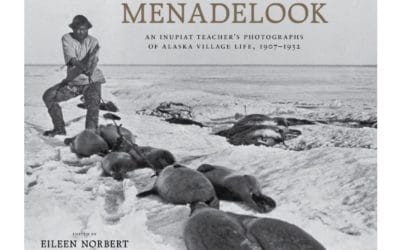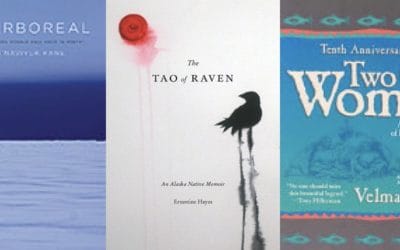Cranberries in Springtime: A Literary Meeting Place for Rural Alaskans
Lingonberries, Vaccinium vitis-adaea, kwntsan’.
About this Blog
Spring Breakup in Bush Alaska
When I first moved to Alaska in March of 2000, I lived in a wall tent while building a cabin at the edge of a remote lake in the Interior. I remember eating the last apple from its box by early April, and having no fresh fruit for a month. And no bath, either, until the ice melted. In May, we started up the Honda 40 horse outboard, and rode in the boat an hour downstream to the edge of where the ice was still breaking up along the Kuskokwim River. We stopped and got out to look around, and discovered lowbush cranberries on the tundra. The flavor of this unexpected gift brought tears. After a month of eating dried fruit, porcupine, and squirrel meat, those winter-sweetened cranberries were the best thing I had ever tasted.
Living in Village Alaska
Years later, living in a small Athabascan community far upriver from where I found the lowbush cranberries, I heard stories, in both English and Athabascan, about the critical importance of those berries to survival of individuals and people of the north. My experience that day led to a deepened understanding and appreciation of the skill and perseverance of local people. And the experience connected me viscerally to the land that sustains us, in a way no words can ever quite describe. Over the years, this memory has become a metaphor, or story, that continues to instruct me in my life.
Cranberries in Springtime
Unexpected second chances in life. Sweetness rendered in this sour fruit, by winter’s bitter cold. Beauty and destruction after a forest fire; morels, fireweed, and renewed forest growth follow. Wildflowers growing up out of an old tire in the woods. Children laughing and playing. Juxtapositions. Oxymorons. Silver linings. Lemonade. Gifts of grace.
Come. Let us sit down in the moss, lichen, and berries of the tundra and know this earth that is our home. The dialectic of healing requires some messiness and discomfort, to enjoy the beauty. It is a journey I would prefer to take together.
Most Recent Posts
An Interview with Julia Phillips, Part 1
Welcome to our podcast, Salmonberries, where we bring you stories, interviews, and discussions from across the circumpolar North to surprise, delight, and build community. Our inaugural podcast features an interview with author Julia Phillips, who wrote the debut novel Disappearing Earth . . . As I read it, I kept thinking of all the ways it is relevant to Alaska. I was so excited by the author’s approach to storytelling . . .
Women of Kamchatka: Review of Disappearing Earth by Julia Phillips
Set in the Kamchatka peninsula of far northeastern Russia, debut novelist Julia Phillips writes in Disappearing Earth about the interior worlds of women, the importance of community, and the impacts of gender-based violence on both, with a depth of human insight reminiscent of Tolstoy. The story opens with the kidnapping of two young Russian girls . . .
Civil Rights Heroine: Review of Fighter in Velvet Gloves by Annie Boochever with Roy Peratrovich Jr.
Elizabeth Peratrovich’s history-making speech before the Alaska Senate in 1945 persuaded passage of America’s first state anti-discrimination act, nearly 20 years prior to Title VII of the US Civil Rights Act. Boochever’s concise, sensitively written, historical teen non-fiction book Fighter in Velvet Gloves conveys Peratrovich’s positive can-do life attitude . . .
Review of One Water: dispatches from the streets and backcountry of Interior Alaska by Rob McCue
Rob McCue’s One Water is a refreshingly interior account, not only because the first person narrator reports from inside the action—often the interior of the city cab he drives in half the stories—but also in the sense of “interior” Alaska, with Fairbanks as its hub and “big village.” . . . It’s a feisty guy narrative from the underserved center of the state that quickly surprises you with its inclusiveness. You never know . . .
Split Tooth Review: Expressions of the Circumpolar Arctic
A thousand stories woven into one, Tanya Tagaq expresses the expansion of our ancestry — our heritage of the land and the trauma — through beautiful poetry. She narrates a story that we can barely say out loud as Iñuit — not because we’re not allowed to and no one will listen, but because . . .
Ice, Fire, Survival in Rural Alaska: Review of Wakolee’s Starting a Fire
Tia Wakolee has done a brave and necessary thing. She has shared her stories with the world as a step in her journey of healing. She has done this in the form of a self-published book. . . Stories of surviving childhood sexual abuse in Alaska are abundant. Until recently, however, very few of these stories . . .
Isolation and Depression: The Darker Side of Rural Alaska
Nearly twenty years ago, while preparing to move to remote Alaska with my first husband, my stepmother asked me “How can you even think about moving so far away from your family and other people you love?” At the time, the calculus of my love . . .
Wild Rice and Sugar Bush: Review of Good Seeds: A Menominee Indian Food Memoir
Wild rice is a storied and staple grain throughout the upper midwest. This anthropological work about Menominee food traditions, done by Thomas Pecore Weso, a Menominee artist and anthropologist, provides a critically important perspective to understanding American food traditions . . .
Alaska Native Anthropology: Review of Menadelook, edited by Eileen Norbert
Compiled and edited by granddaughter Eileen Norbert, Menadelook: An Inupiat Teacher’s Photographs of Alaska Village Life, 1907-1932 maps cultural transition through a man who bridged two worlds in the early 20th century. Norbert succeeds in demonstrating the importance of self-representation of indigenous culture in anthropology . . .
Indigenous Women Authors: Review of The Round House by Louise Erdrich
When I first moved to a small village in rural Alaska, I would hang out in the school library. A lot. I was amazed to find so many books there, in this tiny community off the road system, where the cost of shipping goods exceeded $1/pound. Old books. New books. Lots of stories by writers I knew. Lots of history about Alaska, by writers I’d never heard of. But I struggled to find books by Indigenous women . . .

